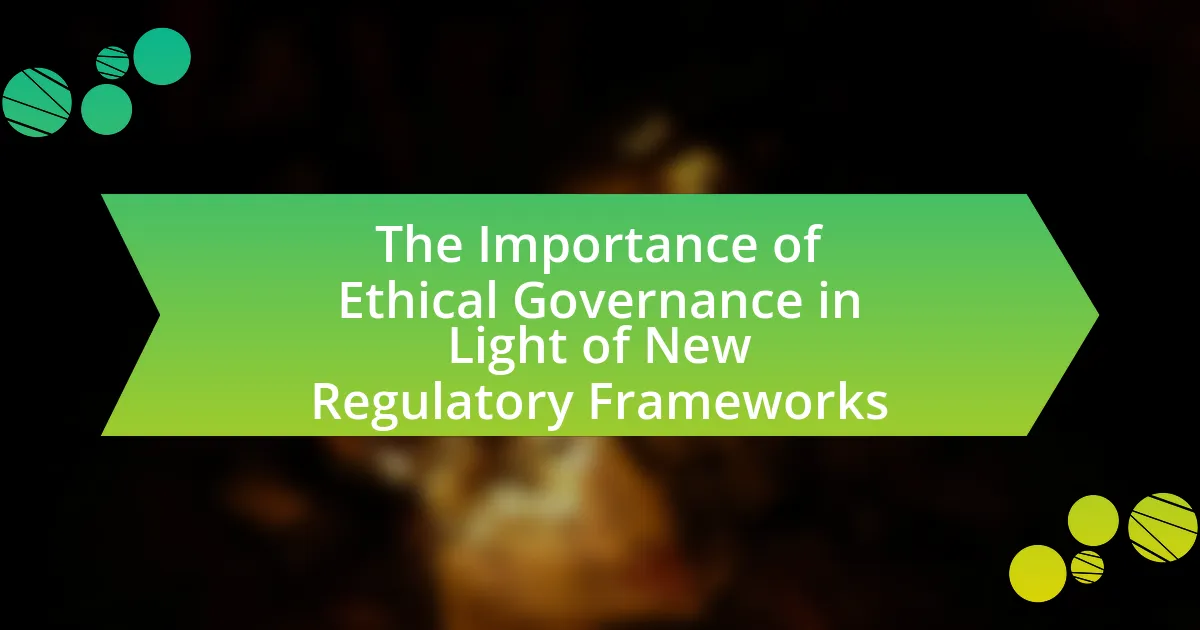The article focuses on the latest Anti-Money Laundering (AML) directives, particularly the European Union’s Sixth Anti-Money Laundering Directive (6AMLD) and the updated recommendations from the Financial Action Task Force (FATF). It outlines the expanded scope of criminal offenses, enhanced penalties for non-compliance, and the impact on financial institutions, which must adopt stricter compliance measures and invest in technology and training. Key compliance requirements include enhanced customer due diligence, ongoing transaction monitoring, and mandatory reporting of suspicious activities. The article also discusses the implications for various stakeholders, challenges faced by financial institutions, and best practices for effective compliance with these directives.

What are the Latest Anti-Money Laundering Directives?
The latest Anti-Money Laundering (AML) directives include the European Union’s Sixth Anti-Money Laundering Directive (6AMLD), which came into effect on December 3, 2020, and the Financial Action Task Force (FATF) recommendations updated in March 2021. 6AMLD expands the scope of criminal offenses related to money laundering and enhances penalties for non-compliance, requiring member states to implement stricter measures against money laundering activities. The FATF’s updated recommendations emphasize the need for countries to adopt a risk-based approach, improve transparency in beneficial ownership, and enhance international cooperation. These directives aim to strengthen the global framework for combating money laundering and terrorist financing.
How do these directives impact financial institutions?
These directives significantly impact financial institutions by imposing stricter compliance requirements and enhancing regulatory scrutiny. Financial institutions must invest in advanced technology and training to meet the new standards, which can increase operational costs. For instance, the Financial Action Task Force (FATF) recommendations necessitate improved customer due diligence processes, leading to a more rigorous assessment of clients’ financial activities. Additionally, failure to comply with these directives can result in substantial fines and reputational damage, as evidenced by the billions in penalties imposed on institutions like Deutsche Bank and HSBC for previous compliance failures.
What specific compliance requirements are introduced?
The specific compliance requirements introduced by the latest Anti-Money Laundering Directives include enhanced customer due diligence, ongoing monitoring of transactions, and the obligation to report suspicious activities to relevant authorities. These requirements aim to strengthen the financial system’s integrity by ensuring that institutions verify the identity of their clients, assess risks associated with money laundering, and maintain comprehensive records of transactions. For instance, the European Union’s 5th Anti-Money Laundering Directive mandates that businesses conduct risk assessments and implement measures to mitigate identified risks, thereby reinforcing compliance frameworks across member states.
How do these requirements differ from previous directives?
The latest anti-money laundering requirements differ from previous directives by introducing more stringent customer due diligence measures and enhanced reporting obligations. Specifically, these new requirements mandate that financial institutions conduct ongoing monitoring of transactions and implement risk-based approaches to identify and mitigate potential money laundering risks. This contrasts with earlier directives, which primarily focused on one-time customer verification and less rigorous transaction oversight. The European Union’s 6th Anti-Money Laundering Directive, for example, emphasizes the need for continuous risk assessment and real-time transaction monitoring, reflecting a shift towards a more proactive stance in combating financial crime.
Why are these directives important for combating money laundering?
These directives are crucial for combating money laundering because they establish a standardized framework for identifying and reporting suspicious financial activities. By mandating due diligence, enhanced customer verification, and ongoing monitoring, these regulations enable financial institutions to detect and prevent illicit transactions effectively. For instance, the Financial Action Task Force (FATF) guidelines, which many countries adopt, have been shown to significantly reduce the incidence of money laundering by promoting transparency and accountability in financial systems.
What role do they play in enhancing global financial security?
Anti-money laundering directives play a crucial role in enhancing global financial security by establishing frameworks that prevent illicit financial activities. These directives require financial institutions to implement rigorous customer due diligence, monitor transactions for suspicious activity, and report any findings to relevant authorities. For instance, the Financial Action Task Force (FATF) sets international standards that countries adopt to combat money laundering and terrorist financing, which helps to create a unified approach to financial security. By enforcing compliance with these directives, nations can reduce the risks associated with financial crimes, thereby fostering a more stable and secure global financial system.
How do they affect the reputation of financial institutions?
Anti-money laundering directives significantly impact the reputation of financial institutions by enforcing compliance and transparency standards. When institutions adhere to these directives, they enhance their credibility and trustworthiness among clients and regulators. Conversely, failure to comply can lead to severe penalties, legal repercussions, and public scandals, which tarnish their reputation. For instance, the 2012 HSBC money laundering scandal resulted in a $1.9 billion fine and a substantial loss of customer trust, illustrating how non-compliance can severely damage an institution’s standing in the market.

What are the Key Components of the Latest Anti-Money Laundering Directives?
The key components of the latest Anti-Money Laundering (AML) directives include enhanced customer due diligence, risk-based approaches to monitoring transactions, and increased reporting obligations for financial institutions. Enhanced customer due diligence requires institutions to verify the identity of their clients and assess the risks associated with them. The risk-based approach mandates that institutions prioritize their resources based on the level of risk presented by different clients and transactions. Increased reporting obligations involve timely reporting of suspicious activities to relevant authorities, ensuring compliance with regulatory frameworks. These components are designed to strengthen the overall effectiveness of AML efforts and mitigate the risks of money laundering and terrorist financing.
What measures are included to strengthen customer due diligence?
Measures to strengthen customer due diligence include enhanced identification and verification processes, ongoing monitoring of customer transactions, and risk assessment protocols. Enhanced identification requires businesses to collect and verify customer information, such as identification documents and proof of address, to ensure accuracy. Ongoing monitoring involves regularly reviewing customer transactions for unusual or suspicious activity, which helps in identifying potential risks. Risk assessment protocols necessitate categorizing customers based on their risk profiles, allowing for tailored due diligence measures that align with the level of risk presented. These measures are essential for compliance with anti-money laundering directives and help mitigate financial crime risks.
How is risk assessment integrated into these measures?
Risk assessment is integrated into anti-money laundering measures by systematically evaluating potential threats and vulnerabilities within financial systems. This integration involves identifying high-risk areas, such as specific customer profiles or transaction types, and applying enhanced due diligence protocols accordingly. For instance, the Financial Action Task Force (FATF) emphasizes a risk-based approach, which mandates that institutions assess their exposure to money laundering risks and allocate resources to mitigate those risks effectively. This approach is supported by data indicating that targeted risk assessments lead to more efficient allocation of compliance resources, ultimately enhancing the effectiveness of anti-money laundering efforts.
What are the implications for customer identification processes?
The implications for customer identification processes include enhanced regulatory requirements and increased scrutiny of customer data. These changes necessitate that financial institutions implement more robust Know Your Customer (KYC) protocols to comply with the latest Anti-Money Laundering (AML) directives. For instance, the Financial Action Task Force (FATF) emphasizes the need for risk-based approaches, which require institutions to assess the risk level of their customers and adjust their identification processes accordingly. This shift not only increases operational costs but also demands advanced technology solutions for efficient data management and analysis.
What reporting obligations do financial institutions face?
Financial institutions face mandatory reporting obligations primarily related to anti-money laundering (AML) and counter-terrorism financing (CTF) regulations. These obligations include the requirement to report suspicious activities, file currency transaction reports for transactions exceeding a specified threshold, and maintain comprehensive records of customer transactions. For instance, under the Bank Secrecy Act in the United States, financial institutions must report transactions over $10,000 and any suspicious activity that may indicate money laundering or fraud. Compliance with these reporting requirements is essential to prevent financial crimes and ensure regulatory adherence.
How do these obligations enhance transparency?
These obligations enhance transparency by mandating financial institutions to conduct thorough due diligence and report suspicious activities. This requirement ensures that transactions are monitored and documented, making it more difficult for illicit activities to go unnoticed. For instance, the Financial Action Task Force (FATF) guidelines compel institutions to maintain detailed records of customer identities and transaction histories, which can be audited and reviewed by regulatory bodies. Consequently, this level of scrutiny fosters an environment where financial misconduct is less likely to occur, thereby increasing overall accountability within the financial system.
What are the penalties for non-compliance?
Penalties for non-compliance with anti-money laundering directives can include substantial fines, criminal charges, and reputational damage. For instance, financial institutions may face fines that can reach millions of dollars, depending on the severity of the violation and the jurisdiction. Additionally, individuals involved may face imprisonment for serious offenses, as seen in cases where executives have been held accountable for failing to implement adequate compliance measures. The Financial Action Task Force (FATF) emphasizes that non-compliance can also lead to increased scrutiny from regulators and potential loss of business licenses, further underscoring the importance of adhering to these directives.

How do the Latest Anti-Money Laundering Directives Affect Different Stakeholders?
The latest Anti-Money Laundering (AML) directives significantly impact various stakeholders, including financial institutions, regulatory bodies, and businesses. Financial institutions are required to enhance their compliance measures, which may involve increased costs for implementing advanced monitoring systems and training staff. Regulatory bodies gain more authority to enforce compliance, leading to stricter oversight and potential penalties for non-compliance. Businesses, particularly those in high-risk sectors, must adapt their operations to meet new reporting requirements, which can strain resources but also enhance their reputation by demonstrating commitment to ethical practices. These directives aim to create a more transparent financial environment, ultimately benefiting all stakeholders by reducing the risk of financial crime.
What challenges do financial institutions encounter in compliance?
Financial institutions encounter several challenges in compliance, primarily due to the complexity and evolving nature of regulations. These institutions must navigate a landscape of diverse and frequently changing laws, such as the latest Anti-Money Laundering directives, which require constant updates to compliance programs. Additionally, the integration of advanced technology for monitoring and reporting can be resource-intensive and costly, leading to operational strain. A report by the Financial Action Task Force indicates that non-compliance can result in significant financial penalties, further emphasizing the importance of effective compliance strategies.
How can technology assist in meeting these challenges?
Technology can assist in meeting the challenges of anti-money laundering (AML) directives by enhancing data analysis and improving compliance processes. Advanced analytics and machine learning algorithms enable financial institutions to detect suspicious patterns and transactions more effectively, thereby reducing the risk of money laundering. For instance, a report by the Financial Action Task Force (FATF) highlights that the use of artificial intelligence in transaction monitoring can increase detection rates by up to 30%. Additionally, blockchain technology provides a transparent and immutable record of transactions, which can facilitate better tracking and verification of funds. These technological advancements not only streamline compliance efforts but also help organizations adhere to regulatory requirements more efficiently.
What training is necessary for staff to adapt to new directives?
Staff must undergo comprehensive training on the latest anti-money laundering directives to effectively adapt to new regulations. This training should include understanding the specific requirements of the directives, recognizing suspicious activities, and implementing compliance measures. Evidence from the Financial Action Task Force indicates that organizations with structured training programs see a 30% increase in compliance effectiveness. Additionally, regular updates and refresher courses are essential to keep staff informed about evolving regulations and best practices.
How do these directives influence regulatory bodies?
These directives significantly influence regulatory bodies by establishing standardized frameworks for compliance and enforcement in anti-money laundering efforts. Regulatory bodies are compelled to align their policies and procedures with the directives, which often include specific requirements for reporting suspicious activities, conducting risk assessments, and implementing customer due diligence measures. For instance, the Financial Action Task Force (FATF) recommendations serve as a benchmark that many countries adopt, thereby shaping national legislation and regulatory practices. This alignment ensures that regulatory bodies can effectively monitor and mitigate risks associated with money laundering, ultimately enhancing the integrity of the financial system.
What changes are expected in enforcement practices?
Changes in enforcement practices are expected to include increased scrutiny and more stringent compliance requirements for financial institutions. The latest anti-money laundering directives emphasize a risk-based approach, compelling institutions to enhance their due diligence processes and reporting mechanisms. For instance, the Financial Action Task Force has recommended that jurisdictions adopt more robust measures to identify and mitigate risks associated with money laundering, which will likely lead to heightened regulatory oversight and enforcement actions against non-compliant entities.
How do these directives shape international cooperation against money laundering?
These directives enhance international cooperation against money laundering by establishing standardized regulations and frameworks that facilitate cross-border collaboration. By mandating countries to implement uniform anti-money laundering (AML) measures, such as customer due diligence and reporting suspicious activities, these directives create a cohesive approach that allows nations to share intelligence and resources effectively. For instance, the Financial Action Task Force (FATF) recommendations serve as a global benchmark, compelling member countries to align their laws and practices, thereby improving the overall effectiveness of international efforts to combat money laundering. This alignment fosters trust and coordination among jurisdictions, enabling timely responses to illicit financial activities.
What best practices should organizations adopt to comply with the directives?
Organizations should adopt a comprehensive risk assessment framework to comply with anti-money laundering directives. This involves identifying and evaluating the risks associated with money laundering and terrorist financing specific to their operations. By implementing robust customer due diligence procedures, organizations can ensure they verify the identity of their clients and assess the risk level of each relationship. Additionally, organizations should establish effective internal controls and compliance programs that include regular training for employees on recognizing suspicious activities.
Evidence of the effectiveness of these practices can be seen in the Financial Action Task Force (FATF) recommendations, which emphasize the importance of risk-based approaches and ongoing monitoring to mitigate potential risks. Furthermore, organizations that have adopted these best practices have reported a significant reduction in compliance breaches and enhanced regulatory relationships.
How can organizations effectively implement compliance programs?
Organizations can effectively implement compliance programs by establishing a clear framework that includes risk assessment, policy development, training, monitoring, and reporting mechanisms. A comprehensive risk assessment identifies vulnerabilities and informs the development of tailored policies that align with regulatory requirements, such as those outlined in the latest Anti-Money Laundering Directives. Training programs ensure that employees understand compliance obligations and the importance of adherence, while ongoing monitoring and reporting mechanisms facilitate the detection of non-compliance and enable timely corrective actions. According to the Financial Action Task Force, effective compliance programs significantly reduce the risk of financial crimes and enhance organizational integrity.
What resources are available for ongoing education and training?
Resources available for ongoing education and training in the context of anti-money laundering (AML) include online courses, webinars, certification programs, and industry conferences. Online platforms such as the Association of Certified Anti-Money Laundering Specialists (ACAMS) offer comprehensive training modules that cover the latest AML directives and compliance requirements. Additionally, organizations like the Financial Action Task Force (FATF) provide guidelines and resources that can enhance understanding of global AML standards. Certification programs, such as the Certified Anti-Money Laundering Specialist (CAMS), validate expertise and are recognized internationally, ensuring that professionals stay updated on evolving regulations. Industry conferences also serve as valuable networking and learning opportunities, where experts share insights on best practices and regulatory changes.





